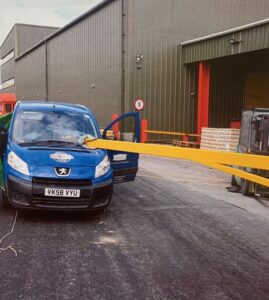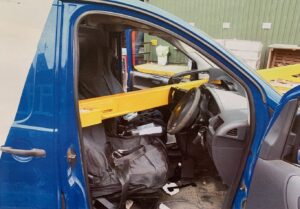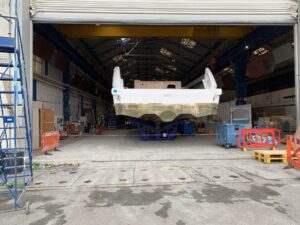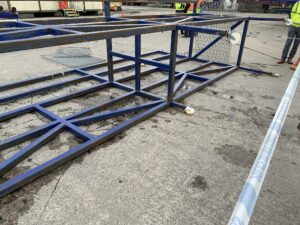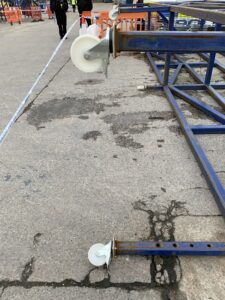Care home fined £125,000 after teenager’s death
A care home in Bristol has been fined for not doing enough to keep people safe from vulnerable patients who posed a danger to themselves and others.
The complex Health and Safety Executive (HSE) investigation and prosecution follows the death of Melissa Mathieson at Alexandra House on 12 October 2014. Jason Conroy murdered the 18-year-old and was jailed for life the following year, following a Crown Prosecution Service case.
Alexandra House on Wells Road, Bristol is one of three homes run by Alexandra Homes (Bristol) Limited. It’s a specialist residential care service for adults with Asperger syndrome and autism spectrum disorders and registered with the Care Quality Commission (CQC).
Both Melissa and Jason were fairly new residents at the home having both moved there in August 2014, Melissa from Crawley, and Jason from a school in Shropshire.

Prior to moving to Alexandra House, Jason Conroy had strangled a member of staff at his school rendering her unconscious. This and several other incidents highlighted the need for close monitoring.
Alexandra House was identified as a suitable place for Jason when he turned 18. Information was passed from his school to Alexandra House warning of his behaviour. This included a risk assessment that said he posed a risk to others and that he had demonstrated sexual aggression towards women. A report also said that he could be violent to others and posed a threat of sexually harmful behaviour to staff and younger peers.
In 2015 Jason Conroy was jailed for life and ordered to serve a minimum term of 19 years for the sexually motivated murder of Melissa.
Following Melissa’s death, the HSE investigation found Alexandra House did not have suitably trained and qualified staff in sufficient numbers to adequately deal with Jason Conroy. In addition, they were not sufficiently informed of the risks he posed. He was not adequately monitored and there were insufficient control methods in place to ensure the safety of people in Alexandra House, particularly at night.
At Bristol Crown Court on 1 December, Alexandra Homes (Bristol) Limited of Kingswood, Bristol, pleaded guilty to breaching Section 3(1) Health and Safety At Work Act 1974 and the Management of Health and Safety at Work Regulations 1999. They were fined £125,000 and ordered to pay £41,000.
Melissa’s father James Mathieson said: “Melissa was a lovely daughter, she was friendly, loved her cuddles, energetic and fun to be with. Everybody loved her and many hearts were broken when she was allowed to be murdered in her sleep.
“When Melissa found a place at Alexandra House, we made it clear to representatives at Alexandra Homes just how vulnerable she was. We were putting her safety into their care and to me they disregarded this.
“They told us they would look after her, she would be safe and they would help her live a full life. That was not true, as they failed on all accounts, and we lost a beautiful daughter, sister, and granddaughter.
“Although Jason Conroy murdered our daughter, I feel he was another failure of Alexandra Homes as he was in the wrong place with the wrong supervision.”
Speaking after the hearing, HSE inspector Caroline Coleman said: “This has been a complex and sensitive investigation. It has taken time, but we now have the right outcome.
“Alexandra Homes was given clear warning signs about Jason Conroy’s behaviour but simply didn’t act upon them. As a result, Melissa Mathieson, a vulnerable young woman lost her life in a setting that was meant to protect and help her.
“While the Care Quality Commission is now the regulator for patient health and safety matters, the legislation is there to help keep people safe and must be followed. Our thoughts remain with Melissa’s family and friends.”
This HSE prosecution was led by HSE lawyer Krystal Savoie.
Notes to Editors:
- The Health and Safety Executive (HSE) is Britain’s national regulator for workplace health and safety. We prevent work-related death, injury and ill health through regulatory actions that range from influencing behaviours across whole industry sectors through to targeted interventions on individual businesses. These activities are supported by globally recognised scientific expertise.
- More information about the legislation referred to in this case is available.
- Further details on the latest HSE news releases is available.
- Following the Mid Staffordshire NHS Foundation Trust Public Inquiry and the publication of the Francis Report, the Care Quality Commission (CQC) was given powers to carry out criminal investigations and bring prosecutions. These took effect in April 2015. Since that time, in England, the CQC has been the regulator for patient health and safety matters, with HSE regulating health and safety for workers and members of the public. A revised memorandum of understanding reflecting these changes and setting out areas of responsibility was agreed by the two organisations which is available on HSE’s website. MoU between the Care Quality Commission (CQC) and HSE
